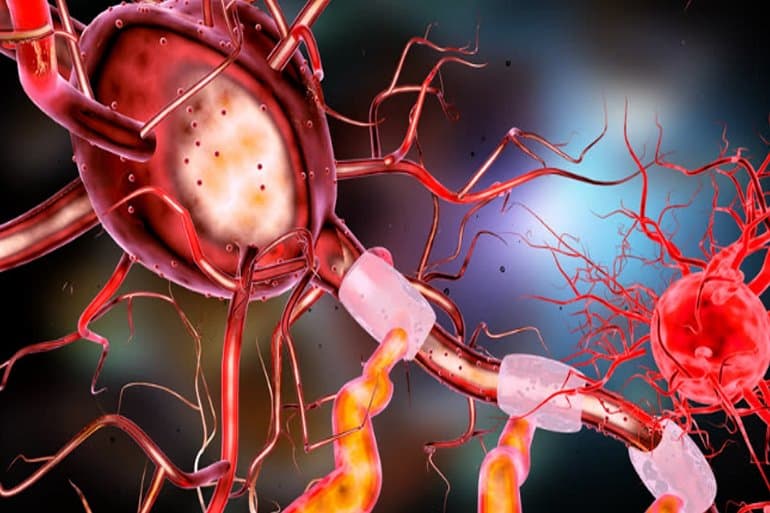Summary: Researchers used neuroimaging technology to show the creation and elimination of synapses between neurons in the brains of living mice. The findings provide insight into what happens when memories are created and forgotten. The research could pave the way for new treatments for PTSD.
Source: University of Minnesota
A University of Minnesota Twin Cities researcher is part of an international team that has used imaging technology to show, for the first time, the creation and elimination of synapses between neurons in the brains of live mice.
The research provides insight into what happens when memories are created and forgotten and could help scientists better understand and treat conditions like post-traumatic stress disorder (PTSD).
The study is published in Current Biology, a biweekly peer-reviewed scientific journal that covers all areas of biology.
“Researchers have been wondering what happens to the synapses that form after we have a fearful experience,” said Hye Yoon Park, co-lead author of the study and an associate professor in the University of Minnesota Department of Electrical and Computer Engineering.
“Previously, researchers were able to detect these synapses in mice only after they sacrificed the mouse, which made it difficult to track those synapses over time. But now, we’ve made it possible to image the synapses in a live mouse brain over several days, so we can better understand what happens to them long-term. It’s the first time this has been done in a live mouse brain, so that’s pretty exciting news in this field.”
This study builds upon Park’s previous research, which leveraged her lab’s expertise in imaging to visualize nerve cells, or neurons, and mRNA molecules associated with memory in the brains of live mice.
Now, the researchers have added more detail by imaging the synapses, or connections, between the neurons. On average, each neuron in the brain has around 7,000 synaptic connections with other neurons, which allow the cells to pass signals to each other and drive cognitive functions like learning and memory.
The University of Minnesota team collaborated with researchers at Seoul National University in Korea who developed a technology called eGRASP to detect synapses in the brain.
Combined with Park’s imaging techniques, the researchers were able to see the dynamics of synapses in a live mouse brain both while it was remembering a fearful experience and while it was experiencing “memory extinction,” or fear memory suppression.

“There are two different hypotheses about this in the neuroscience field,” Park explained.
“When memory extinction happens, some people believed the synapses that develop during fear conditioning may disappear, also called the ‘unlearning’ of pre-acquired memories.
“Others thought that they were still there, but maybe another set of synapses formed to show that the mouse has now learned the environment is safe again, which is referred to as ‘new learning’ about the contingency.”
The researchers’ data supported the unlearning hypothesis. They found that some of the new synapses formed during a fearful experience were eliminated over the course of the memory extinction process. These findings could help scientists better understand brain activity in patients with conditions like post-traumatic stress disorder (PTSD).
Funding: The research was funded by the National Honor Scientist Program of Korea and the Samsung Science and Technology Foundation.
In addition to Park, the research team included Seoul National University researchers Chaery Lee, Byung Hun Lee, Hyunsu Jung, Chiwoo Lee, Yongmin Sung, Hyopil Kim, Jooyoung Kim, Jae Youn Shim. Ji-il Kim, Dong Il Choi, and Professor Bong-Kiun Kaang.
About this neuroscience and memory research news
Author: Rhonda Zurn
Source: University of Minnesota
Contact: Rhonda Zurn – University of Minnesota
Image: The image is in the public domain
Original Research: Open access.
“Hippocampal engram networks for fear memory recruit new synapses and modify pre-existing synapses in vivo” by Hye Yoon Park et al. Current Biology
Abstract
Hippocampal engram networks for fear memory recruit new synapses and modify pre-existing synapses in vivo
Highlights
- Hippocampal synaptic connections are tracked by two-photon imaging of dual-eGRASP
- E-E synapses undergo synaptogenesis according to fear conditioning
- Extinction learning significantly correlated with the disappearance of E-E synapses
- Spatial distribution of new E-E synapses induces clustering of engram synapses
Summary
As basic units of neural networks, ensembles of synapses underlie cognitive functions such as learning and memory. These synaptic engrams show elevated synaptic density among engram cells following contextual fear memory formation.
Subsequent analysis of the CA3-CA1 engram synapse revealed larger spine sizes, as the synaptic connectivity correlated with the memory strength.
Here, we elucidate the synapse dynamics between CA3 and CA1 by tracking identical synapses at multiple time points by adapting two-photon microscopy and dual-eGRASP technique in vivo.
After memory formation, synaptic connections between engram populations are enhanced in conjunction with synaptogenesis within the hippocampal network.
However, extinction learning specifically correlated with the disappearance of CA3 engram to CA1 engram (E-E) synapses. We observed “newly formed” synapses near pre-existing synapses, which clustered CA3-CA1 engram synapses after fear memory formation.
Overall, we conclude that dynamics at CA3 to CA1 E-E synapses are key sites for modification during fear memory states.






